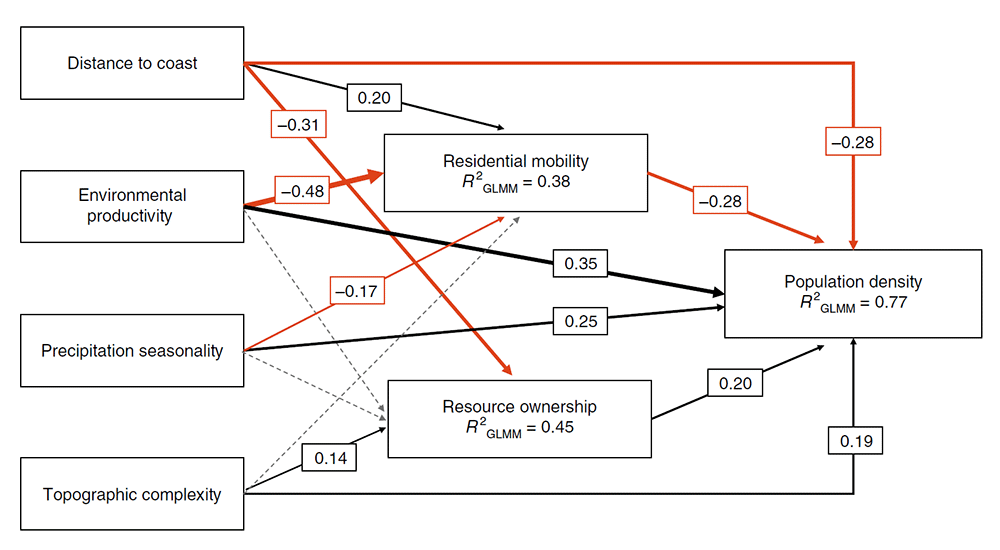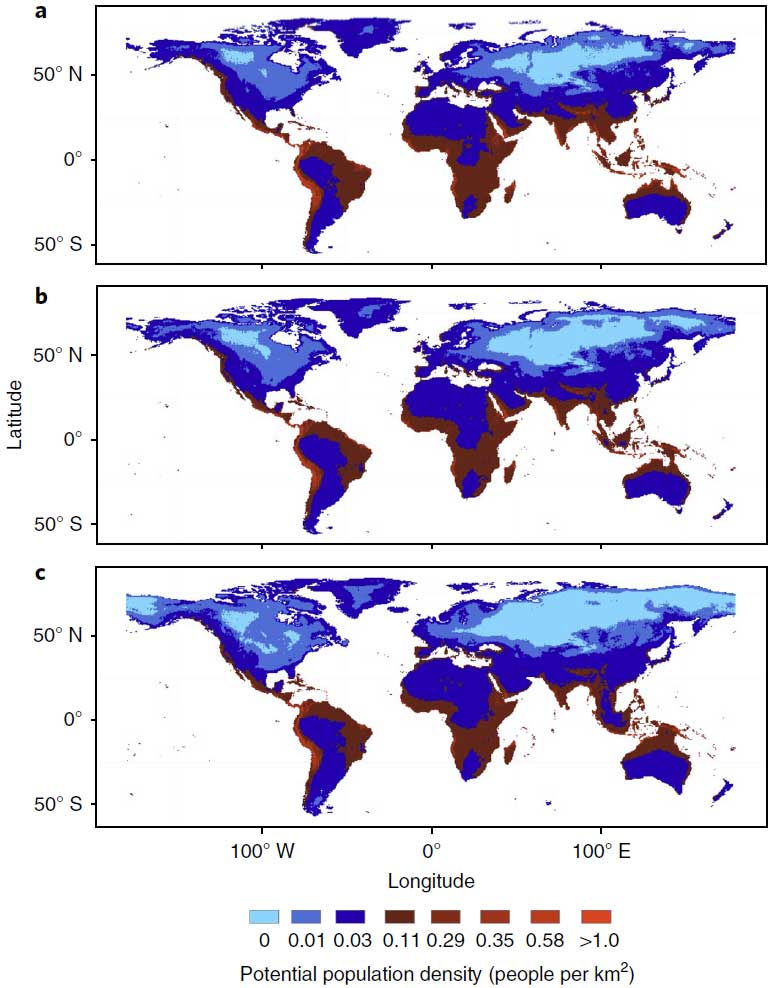New paper (behind paywall) Hindcasting global population densities reveals forces enabling the origin of agriculture, by Kavanagh et al., Nature Human Behaviour (2018)
Abstract (emphasis mine):
The development and spread of agriculture changed fundamental characteristics of human societies1,2,3. However, the degree to which environmental and social conditions enabled the origins of agriculture remains contested4,5,6. We test three hypothesized links between the environment, population density and the origins of plant and animal domestication, a prerequisite for agriculture: (1) domestication arose as environmental conditions improved and population densities increased7 (surplus hypothesis); (2) populations needed domestication to overcome deteriorating environmental conditions (necessity hypothesis)8,9; (3) factors promoting domestication were distinct in each location10 (regional uniqueness hypothesis). We overcome previous data limitations with a statistical model, in which environmental, geographic and cultural variables capture 77% of the variation in population density among 220 foraging societies worldwide. We use this model to hindcast potential population densities across the globe from 21,000 to 4,000 years before present. Despite the timing of domestication varying by thousands of years, we show that improving environmental conditions favoured higher local population densities during periods when domestication arose in every known agricultural origin centre. Our results uncover a common, global factor that facilitated one of humanity’s most significant innovations and demonstrate that modelling ancestral demographic changes can illuminate major events deep in human history.

Interesting excerpts:
(…) our results are consistent with the surplus hypothesis, which suggests that improving environmental conditions and the potential for increased population density may have facilitated the domestication of plants and animals in agricultural origin centres4,7 (Fig. 3). Several factors may explain the links between environmental conditions, potential population density and the origin of domestication. For one, rates of innovation may scale positively with the number of potential innovators13,14. In turn, the likelihood of domestication innovations may have increased in environments that could support increasingly higher densities of foraging people.
In addition, foraging societies may have become more sedentary to take advantage of locally abundant resources, some of which were later domesticated35. Our results indicate that residential mobility scales negatively with population density in foraging societies (Fig. 1). Therefore, increasingly sedentary lifestyles may have contributed further to increases in population density and the potential for innovation. Increases in the productivity of wild progenitors of important domesticates may have also facilitated growing population densities and the viability of cultivation for food production15,16.

It is also possible that improving environmental conditions may have resulted in a situation where necessity drove the origins of domestication. For example, population densities may have increased in foraging societies that occupied productive, coastal areas, causing an outflow of groups into regions with less ideal conditions where the cultivation of plants and animals was required to secure adequate food resources6,17,18. Our results cannot support, or refute, the possible influence the outflow of people from hospitable locations to less ideal environments may have played. A detailed understanding of the movements of ancient populations is required for more rigorous testing of the role that forced habitation of marginal environments may have played in the origins of domestication at particular sites.
See also: